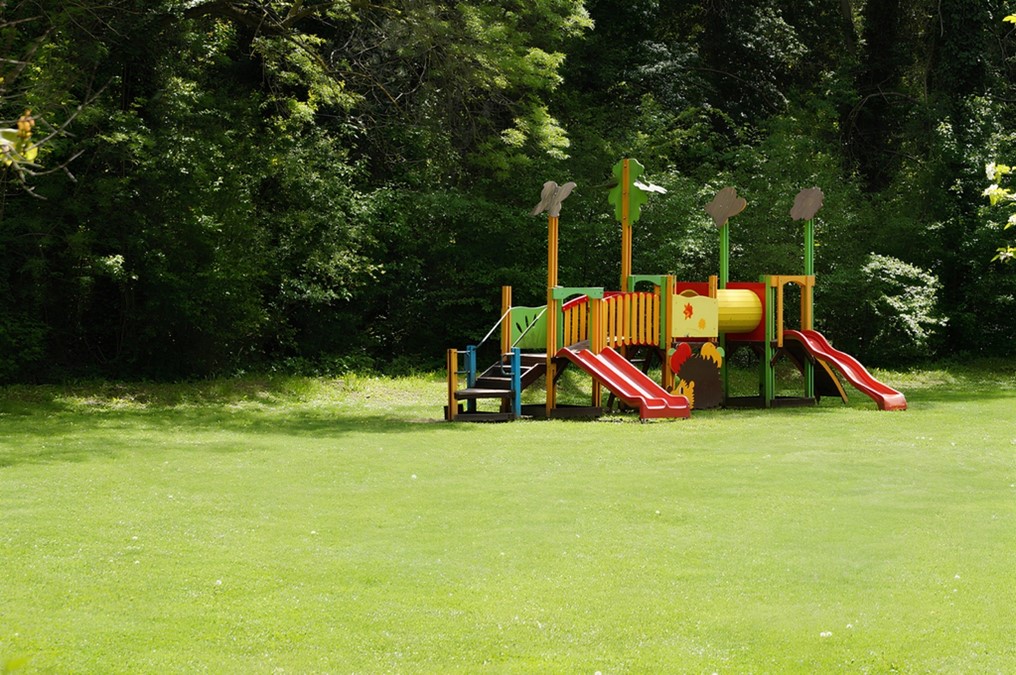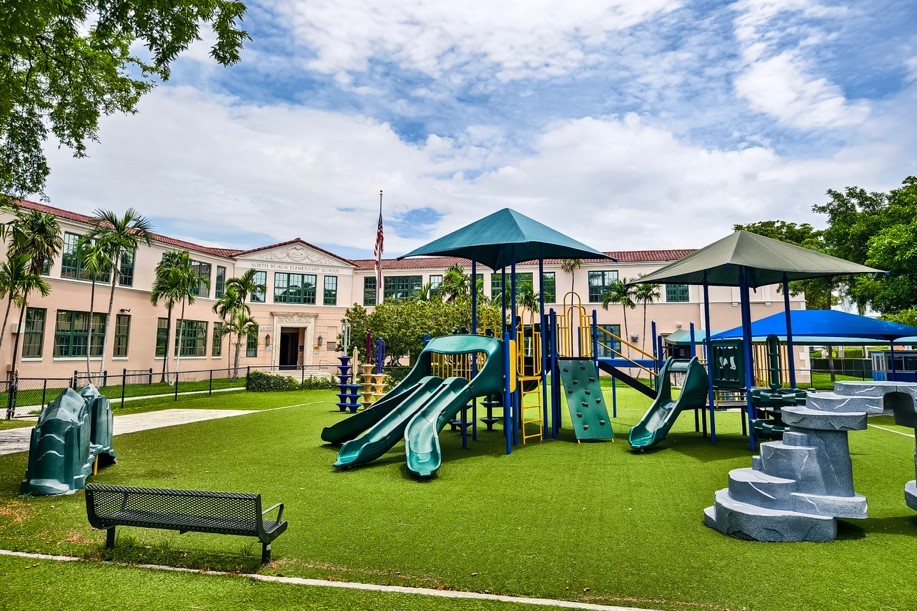School playgrounds have become dangerously hot. In states with warmer climates, heat generated by the amount of asphalt surrounding a school can prevent children from enjoying outdoor recess and learning activities in the warmer months.
Researchers have reported temperatures on urban schoolyard pavements that are over 145 degrees Fahrenheit, making them unsafe for children to play on. Rural districts that have installed large areas of rubber or artificial turf are also facing challenges in the early fall and late spring due to the heat-absorbing properties of these artificial surfaces.
What started as an incremental school-by-school movement to rip up pavement and plant trees, gardens, and natural shade structures has turned into a national movement. As climate change increases temperatures, school districts are feeling the urgency of replacing the asphalt and blacktop surfaces around their schools.
Green schoolyards provide students with many benefits including support for physical and mental health. A recent review of the research literature found clear connections between green schoolyards and improvements in children’s physical activity and socioemotional health.1
First-adopters are providing other districts with a roadmap for designing and funding these new green schoolyards. The following sections provide information about what organizations are providing guidance in this area, examples of model schools that have successfully transformed their playgrounds into green spaces, and strategies for funding green projects.

Follow the Leaders
The 3 largest organizations involved in greening playgrounds are Green Schoolyards America, the Trust for Public Land, and the Children and Nature Network.
- Green Schoolyards America provides support for schools transforming asphalt-covered playgrounds into healthier green spaces. These “living schoolyards” improve children’s social and emotional health and strengthen communities by improving resilience in the face of concerning climate changes. Green Schoolyards America leads technical assistance programs and provides online resources to support K-12 district leaders in creating living schoolyard plans and projects. Schools can join the organization’s Community of Practice for Schoolyard Forests to discuss options for greening their own schoolyards and playgrounds.
- Trust for Public Land is an organization committed to providing everyone with access to the outdoors. The Trust helps create parks and protect lands to improve community life and strengthen ties to the environment for generations to come. The Trust works on many types of projects including assisting schools in turning their asphalt playgrounds into green spaces
- Children & Nature Network is committed to creating green schoolyards to provide students, teachers, and parents with healthy places to learn and grow. The Network helps communities design spaces that will be of greatest benefit to individual communities. These spaces provide school children with green spaces but also are open to the entire community to be used during out-of-school time. Planning by this organization includes nature play areas, vegetable gardens, trees, water features, stormwater capture, and playground equipment.

Model Schools
- Melrose Leadership Academy is a Transitional K-8 school in California that transformed heat absorbing blacktop that covered much of its campus into a green schoolyard. With assistance from the Trust for Public Land, Melrose was able to convert the schoolyard into a welcoming place for native plant gardens, shade trees, shaded picnic tables, and a turf field. The native plants are able to absorb over 61,000 gallons of stormwater and keep the playground cool on warm days. The project took seven years with a cost of two million dollars from grants from local organizations, private donors, and a statewide funding program called the Green Schoolyards Grant Program.
- Franklin Elementary Community Schoolyard in Rochester Minnesota will be breaking ground on a project in late 2025 to transform their outdoor space into a healthier and cooler green environment that can be enjoyed by their 600 students and the surrounding 2,000 community members. The new space will include outdoor classrooms and meeting spaces as well as pollinator plantings and new nature-based play structures. With technical assistance from the Public Land Trust and funding through the Minnesota Environment and Natural Resources Trust Fund once completed the space will serve all members of the community.
- Add B. Anderson School in West Philadelphia transformed a schoolyard that was largely cracked concrete and weeds into rain gardens, flowering plants and quickly growing trees that will provide shade for students playing outside. The gardens are designed to keep storm water from polluting the nearby creek and the Schuylkill River. The design efforts involved students in the planning process and the entire project took five years and was funded by the School District of Philadelphia, the Philadelphia Water Department, Children’s Hospital of Philadelphia, and the Philadelphia 76ers.
Funding Green Schoolyards
Funding is one of the biggest challenges in transforming schoolyards from asphalt to green space. Early adopter schools have used a variety of strategies to fund their initiatives. HealthySchoolsCampaign.org has created an extensive report based on case studies that provides many potential funding sources to pursue including local and community grants, national government funding, social impact bonds, hospitals and the healthcare industry, financial institutions, and environmental justice organizations. A comprehensive list is provided in a PDF available from: HealthySchoolsCampaign.org.
 Leslie Stebbins is the director of Research4Ed. She has more than twenty-five years of experience in higher education and K-12 learning and instructional design. She has an M.Ed. from the Technology Innovation & Education Program at the Harvard Graduate School of Education and a Master’s in Library and Information Science from Simmons College.
Leslie Stebbins is the director of Research4Ed. She has more than twenty-five years of experience in higher education and K-12 learning and instructional design. She has an M.Ed. from the Technology Innovation & Education Program at the Harvard Graduate School of Education and a Master’s in Library and Information Science from Simmons College.








